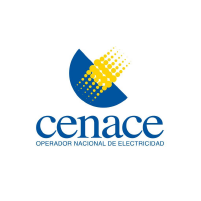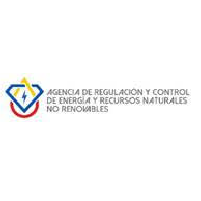Optimización Multi-objetivo de Potencia Activa y Reactiva para crear la Curva PQ en las Barras del SEP
Multi-objective Optimization of the Active and Reactive Power to PQ curve of the Power System Bus
Cómo citar
Descargar cita
Mostrar biografía de los autores
Artículos similares
- Julio Lascano, Luis Chiza, Roberth Saraguro, Carlos Quinatoa, Jessy Tapia, Estimación de la Demanda de una Estación de Carga para Vehículos Eléctricos Mediante la Aplicación de Métodos Probabilísticos , Revista Técnica "energía": Vol. 20 Núm. 1 (2023): Revista Técnica "energía", Edición No. 20, ISSUE I
- Rolando Noroña, Edgar Cajas, Carlos Lozada, Marlon Chamba, Análisis de Estabilidad Transitoria Utilizando el Concepto de Inercia y Minería de Datos , Revista Técnica "energía": Vol. 22 Núm. 1 (2025): Revista Técnica "energía", Edición No. 22, ISSUE I
- Andrés Pereira, Roberth Saraguro, Carlos Quinatoa, Evaluación de Pérdidas de Potencia Activa en el Sistema Eléctrico de la Empresa eléctrica Quito (EEQ) Aplicando un Algoritmo de Optimización , Revista Técnica "energía": Vol. 21 Núm. 1 (2024): Revista Técnica "energía", Edición No. 21, ISSUE I
- Diego Lojano, Juan Palacios, Flujo Óptimo de Sistemas Eléctricos de Potencia con Consideraciones Ambientales , Revista Técnica "energía": Vol. 21 Núm. 2 (2025): Revista Técnica "energía", Edición No. 21, ISSUE II
- Paulo Castro, Jaime Cepeda, Análisis del Impacto de la Penetración de Energías Renovables no Gestionables en la seguridad operativa de los Sistemas Eléctricos de Potencia , Revista Técnica "energía": Vol. 22 Núm. 1 (2025): Revista Técnica "energía", Edición No. 22, ISSUE I
- José Castro, Paúl Soto, Ruth Reategui, Tuesman Castillo, Partición de una Red Eléctrica de Distribución Aplicando Algoritmos de Agrupamiento K-means y DBSCAN , Revista Técnica "energía": Vol. 20 Núm. 1 (2023): Revista Técnica "energía", Edición No. 20, ISSUE I
- Sasha Palacios, Metodología para Calcular los Límites de Estabilidad Estática de Ángulo en el Sistema Nacional Interconectado (SNI) Ecuatoriano Usando el Criterio de Áreas Iguales y Mediciones Sincrofasoriales , Revista Técnica "energía": Vol. 22 Núm. 1 (2025): Revista Técnica "energía", Edición No. 22, ISSUE I
- Daniel Jiménez, Wilson Andino, Mauricio Soria, Fabián Pérez, Coordinación Óptima de Relés de Sobrecorriente Temporizados empleando Algoritmos Heurísticos COA y GSA , Revista Técnica "energía": Vol. 21 Núm. 1 (2024): Revista Técnica "energía", Edición No. 21, ISSUE I
- Nelson Granda, Karen Paguanquiza, Modelos de Respuesta de la Frecuencia para el Sistema Nacional Interconectado Ecuatoriano , Revista Técnica "energía": Vol. 21 Núm. 1 (2024): Revista Técnica "energía", Edición No. 21, ISSUE I
- William Yugcha, Diego Pichoasamin, Paúl Astudillo, Comparación y Optimización del Uso de Filtro Pasivo y Activo de Potencia para Mitigar Armónicos en Redes de Distribución con Cargas no Lineal , Revista Técnica "energía": Vol. 21 Núm. 1 (2024): Revista Técnica "energía", Edición No. 21, ISSUE I
También puede Iniciar una búsqueda de similitud avanzada para este artículo.
Artículos más leídos del mismo autor/a
- Diego Arias , Patricia Gavela, Jonathan Riofrio, Estado del Arte: Incentivos y Estrategias para la Penetración de Energía Renovable , Revista Técnica "energía": Vol. 18 Núm. 2 (2022): Revista Técnica "energía", Edición No. 18, ISSUE II
- Diego Arias , Patricia Gavela, Walter Intriago, Subastas de Recursos Energéticos Distribuidos para Empresas Eléctricas de Distribución , Revista Técnica "energía": Vol. 18 Núm. 2 (2022): Revista Técnica "energía", Edición No. 18, ISSUE II
En este trabajo, se propone un problema de optimización multiobjetivo de potencia activa y reactiva en las barras del sistema, el cual considera los límites operativos, la capacidad de generación, las reservas de potencia reactiva, capacidad de potencia activa, las restricciones de transmisión, y los límites de voltaje del sistema eléctrico de potencia (SEP).
El problema de optimización multiobjetivo propuesto se basa en una combinación de la función objetivo1: margen de potencia reactiva y la función objetivo 2: potencia activa, en la barra sujeta a analisis del margen del SEP. Del problema multiobjetivo se obtiene la Frontera de Pareto, que representa la curva PQ (proyección de la curva PV y QV sobre el plano) de la barra en análisis. El modelo del problema de optimización es aplicado a un sistema de prueba para su validación y análisis de resultados. De esta manera se proporciona una medida confiable para evaluar la estabilidad de voltaje y la seguridad del sistema en redes eléctricas considerando los limites máximos de operación del SEP.
Visitas del artículo 1142 | Visitas PDF 981
Descargas
[1] P. A. Ruiz and P. W. Sauer, “Reactive power reserve issues,” in 2006 38th Annual North American Power Symposium, NAPS-2006 Proceedings, 2006, pp. 439–445.
[2] V. Ajjarapu, P. L. Lau, and S. Battula, “An Optimal Reactive Power Planning Strategy Against Voltage Collapse,” IEEE Trans. Power Syst., vol. 9, no. 2, pp. 906–917, 1994.
[3] H. Barot and K. Bhattacharya, “Optimal Reactive Power Planning and Compensation Effects on Transmission Loss Components,” in Power Engineering Society General Meeting. IEEE, 2007, pp. 1–7.
[4] T. Van Cutsem, “A Method to compute Reactive Power Margins with respect to Voltage Collapse,” IEEE Trans. Power Syst., vol. 6, no. 1, pp. 145–156, 1991.
[5] Q. Liu, J. Liu, J. Shi, and Y. Huang, “A New Method to Compute Reactive Power Margin,” in IEEE International Conference on Industrial Technology. ICIT 2008., 2008, pp. 0–5.
[6] X. He, X. Pang, D. R. Zhu, and C. X. Liu, “Multi-objective reactive power optimization based on chaos particle swarm optimization algorithm,” in Proceedings - 2013 2nd International Symposium on Instrumentation and Measurement, Sensor Network and Automation, IMSNA 2013, 2013, no. 1, pp. 1014–1017.
[7] Z. Li, M. M. Begovic, and X. Duan, “Reactive power planning using a two-level optimizer based on multi-objective algorithms,” in 2009 15th International Conference on Intelligent System Applications to Power Systems, ISAP ’09, 2009, pp. 1–6.
[8] J. Vallejos, U. Fernández, and R. Ramos, “Multiobjective reactive power compensation applied to the Paraguayan power system,” in 2006 IEEE PES Transmission and Distribution Conference and Exposition: Latin America, TDC’06, 2006, vol. 00, pp. 1–6.
[9] N. Krami, M. A. El-Sharkawi, and M. Akherraz, “Pareto multiobjective optimization technique for reactive power planning,” in IEEE Power and Energy Society 2008 General Meeting: Conversion and Delivery of Electrical Energy in the 21st Century, PES, 2008, pp. 1–6.
[10] H. Singh and L. Srivastava, “Recurrent multi-objective differential evolution approach for reactive power management,” IET Gener. Transm. Distrib., vol. 10, no. 1, pp. 192–204, 2016.
[11] P. Dong, L. Xu, Y. Lin, and M. Liu, “Multi-Objective Coordinated Control of Reactive Compensation Devices Among Multiple Substations,” IEEE Trans. Power Syst., vol. 33, no. 3, pp. 2395–2403, 2018.
[12] M. Mohsen and H. Siahkali, “Multi-objective optimization of reactive power dispatch in power systems via SPMGSO algorithm,” in IEEE Proceedings 2017 Smart Grid Conference, SGC 2017, 2018, vol. 2018-Janua, pp. 1–9.
[13] J. Wu, N. Li, L. He, B. Yin, J. Guo, and Y. Liu, “Research on multi-objective reactive power optimization based on modified particle swarm optimization algorithm,” in 2010 Chinese Control and Decision Conference, CCDC 2010, 2010, pp. 477–480.
[14] W. Zheng et al., “Multi-objective reactive power and voltage optimization for distribution network,” in 2018 International Conference on Power System Technology, POWERCON 2018 - Proceedings, 2019, no. 201806150000008, pp. 2216–2221.
[15] B. Song, Y. Cao, X. Zhang, Y. Wang, and N. Li, “Multi-objective reactive power optimization in power system based on improved PSO-OSA algorithm,” in 2019 14th IEEE Conference on Industrial Electronics and Applications (ICIEA), 2019, vol. 3, pp. 1514–1519.
[16] M. Zhang and Y. Li, “Multi-Objective Optimal Reactive Power Dispatch of Power Systems by Combining Classification-Based Multi-Objective Evolutionary Algorithm and Integrated Decision Making,” IEEE Access, vol. 8, pp. 38198–38209, 2020.
[17] M. Belazzoug and M. Boudour, “FACTS placement multiobjective optimization for reactive power system compensation,” in 2010 7th International Multi-Conference on Systems, Signals and Devices, SSD-10, 2010, pp. 1–6.
[18] C. Levis, C. T. Phan-Tan, and M. Hill, “Multi-Objective Optimal Active and Reactive Power Dispatch for Centrally Controlled Distributed PV Systems,” in Proceedings - 2018 53rd International Universities Power Engineering Conference, UPEC 2018, 2018, pp. 1–6.
[19] D. Arias, L. Vargas, and C. Rahmann, “WAMS-Based Voltage Stability Indicator Considering Real Time Operation,” IEEE Lat. Am. Trans., vol. 13, no. 5, pp. 1421–1428, 2015.
[20] D. Chávez, S. Espinosa, and D. Arias, “Reactive Power Optimization of the Electric System based on Minimization of Losses,” IEEE Lat. Am. Trans., vol. 14, no. 11, pp. 4540–4546, 2016.
[21] C. Cutsem, Thierry Van; Vournas, Voltage Stability of Electric Power Systems, Publishers. 1998.
[22] T. Van Cutsem, “A method to compute reactive power margins with respect to voltage collapse,” IEEE Trans. Power Syst., vol. 6, no. 1, pp. 145–156, 1991.






















